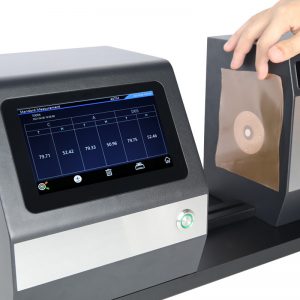In industries such as packaging, glasses, automotive, plastics, and films, the transparency or see-through level of transparent or translucent products is an important determinant of its quality. This presents a need to assess and standardize it. The haze meter is a widely-used instrument for such applications. It can quantify transparency in terms of % haze and % transmittance.

3nh Technology is a renowned manufacturer of instruments for evaluating visual parameters. One of their flagship products is the haze meter. They have a wide range of models conforming to international standards such as ASTM D1003, ISO 13468, and equivalent JIS and GB/T standards.
| Parameters | Model(s) |
Haze & Transmittance (Non-compensation method) Compliance with ASTM D1003 | YH1000 YH1100 YH1102 |
Haze & Transmittance (Includes compensation port for compensated haze as per ISO 13468) | YH1200 YH1210 |
Haze, Transmittance, & Color | YH1600 YH1610 YS6002 YS6002-M |
Haze, Transmittance, Color, & Clarity | YH1810 |
The transmission haze meters from 3nh Technology can measure a variety of parameters, including the following.
Transmittance: In simple terms, transmittance is the amount of light that passes through the test specimen without getting scattered. Theoretically, it can be defined as the ratio of luminous flux that passes through the specimen to the luminous flux that was incident onto the specimen. It is usually expressed in terms of percentage.
Haze: Haze is a measure of rays subjected to wide angle scattering i.e deviation by more than 2.5 degrees. It can be calculated as the percentage ratio of light flux scattered by more than 2.5 degrees to the transmitted light flux.
Clarity: It is the amount of light that undergoes deviation by less than 2.5 degrees from the normal i.e. the rays subjected to narrow angle scattering. It is calculated as the ratio of light flux scattered by less than 2.5 degrees to the transmitted light flux, expressed in percentage
Fundamentally, a haze meter analyses the scattering of light caused by a material. This could be due to a combination of reasons such as surface defects, internal organization of compounds, and presence of bubbles and impurities. These factors contribute to the transparency or haze of a material.
The important components of a transmission haze meter are the illuminant (light source) and the photodetector. The type of illuminant depends on the standard the instrument is designed to comply with. For example, ASTM D1003 suggests that the illuminants A and C are to be used while ISO 13468 prescribes D65.
A collimated beam of light from the light source, when incident on the test specimen, undergoes the following changes.
The angle at which the scattered light deviates from the normal is determined by the size and number of imperfections in the material. Small imperfections cause the ray to be scattered in all directions, resulting in wide angle scattering. In objective terms, the rays will deviate at an angle more than 2.5 degrees from the normal. On the contrary, large imperfections result in narrow angle scattering i.e. deviation is less than 2.5 degrees.
As manufacturers have started laying a lot more importance on quality control, the need for haze meters is growing. It finds use in different industries such as the following.
One of the most important aspects of glass is its see-through level. This is relevant to all types of glasses such as construction, opticals, electronics, and so on.
The automotive industry tightly controls the haze and transmittance levels, especially in parts such as the windshield. This is for both aesthetic appeal and safety regulations.
Transparent packaging materials are commonly used for a variety of uses. A common denominator of their quality is their transparency.
Agaram Industries is the authorized distributor of Shenzhen 3nh Technology haze meters in India. To get a quotation with the haze meter price, you can fill up this form or directly send an email to sales@agaramindia.com.
INTERESTED IN OUR PRODUCTS?
Related Products